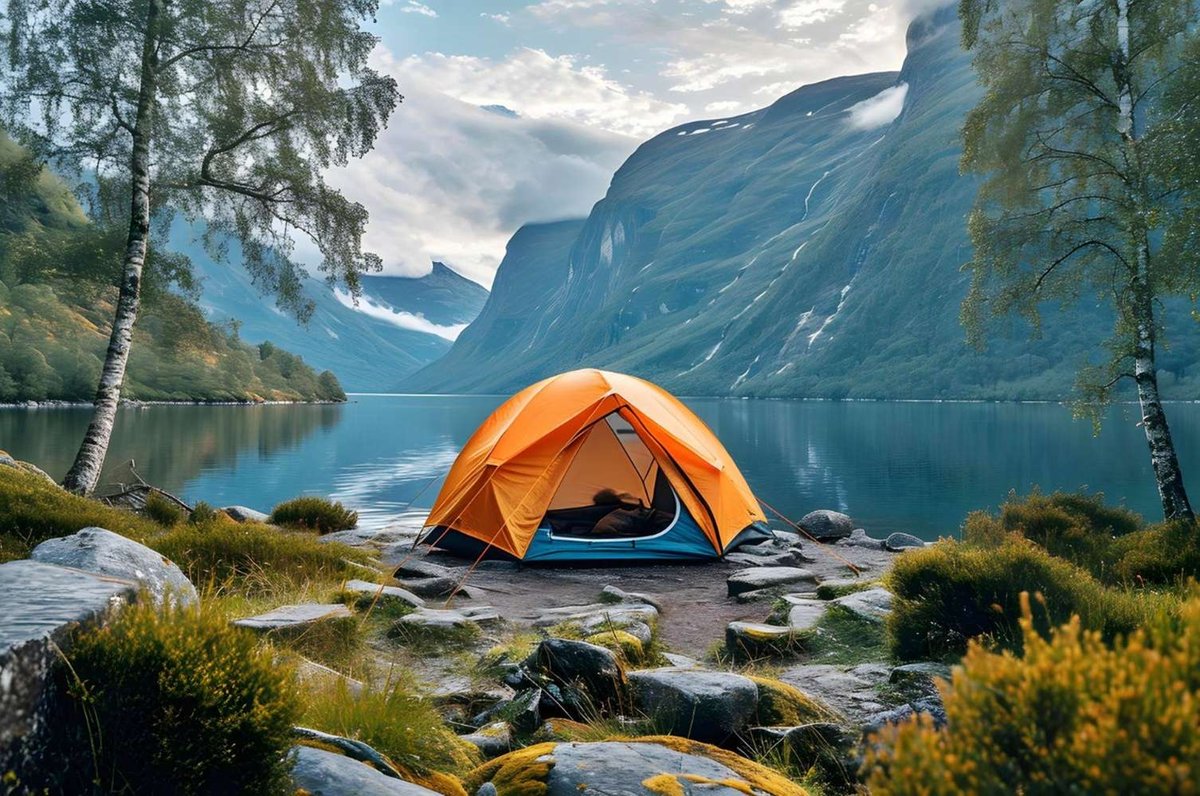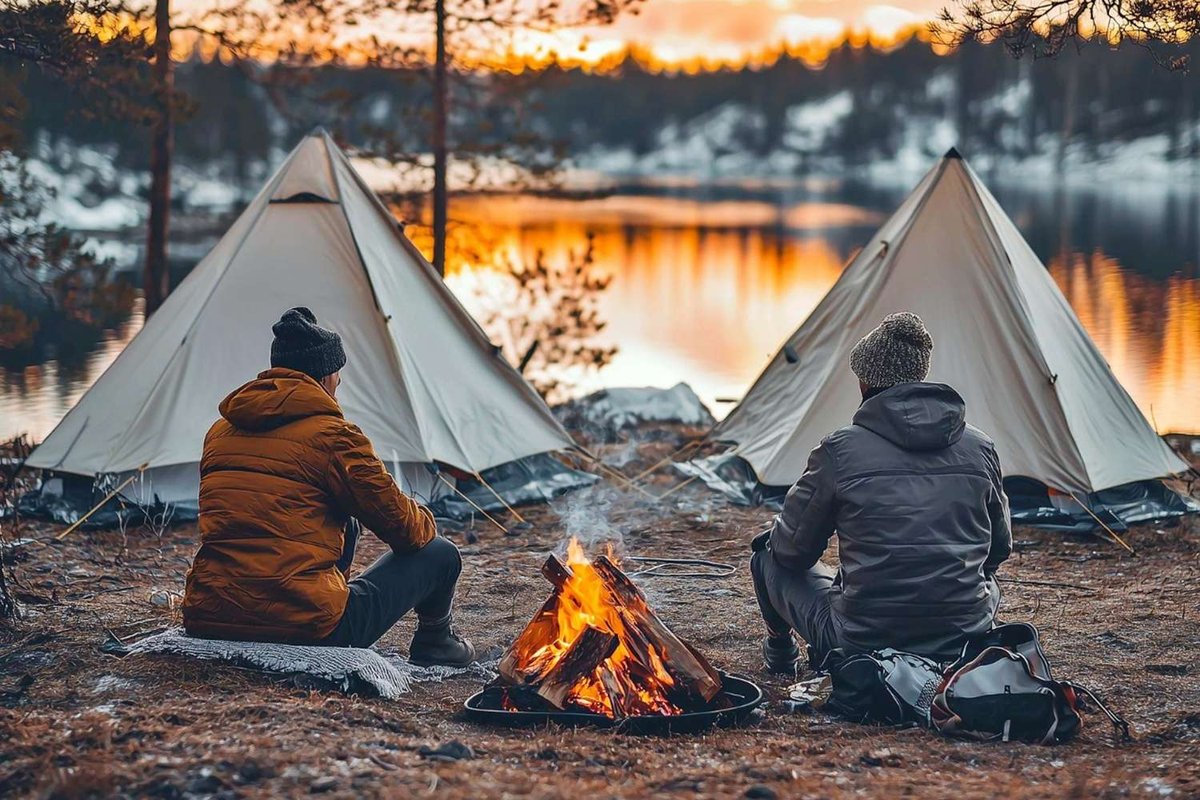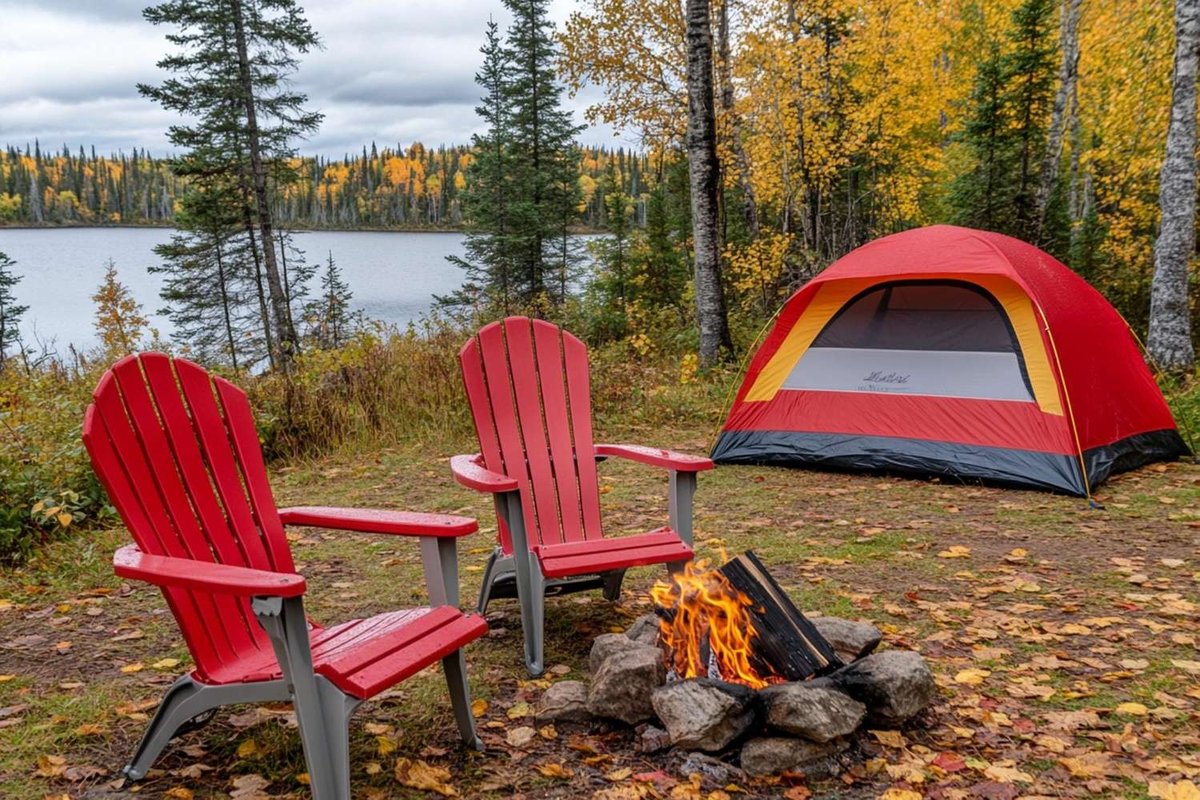⛺ Is it possible to pitch a tent in nature in Norway: camping rules and tips for tourists
One of the main reasons to visit Norway is its amazing nature, and the best way to experience it is to camp in a tent surrounded by stunning landscapes. Norway has a unique right of access called Allemannsretten, which allows tourists to pitch tents freely in nature. However, there are some nuances and restrictions that are important to know in advance. In this article, you will find detailed answers to the 10 most important questions about camping and tents in Norway, as well as useful links to blog sections: ‘Nature, national parks and outdoor activities’, ‘Safety, sustainable tourism and accessibility’, ‘Useful tips for tourists’ and other categories.

❓10 FAQs about camping in Norway
1. What is Allemannsretten and how does it work?
Allemannsretten (right of free access) is a unique Norwegian law that allows you to move around freely and pitch tents in the open countryside, including private land, as long as you do not cause damage to nature or landowners.
The law allows you to pitch a tent almost anywhere, subject to simple rules: no closer than 150 metres from residential buildings and not on cultivated farmland. It is also prohibited to disturb the natural habitat of wild animals. Tents can be pitched for a maximum of two consecutive nights in one place, unless you have obtained permission from the landowner to stay longer. The Allemannsretten right must be exercised with care, always cleaning up after yourself and respecting local residents. For useful tips on using Allemannsretten, see the section ‘Nature, national parks and outdoor recreation’.
2. Where is it not allowed to pitch a tent in Norway?
Despite the freedom, there are clear restrictions on where you cannot pitch a tent:
- closer than 150 metres to residential buildings, cottages and private property;
- on cultivated fields and agricultural land;
- in nature reserves and national parks, if prohibited by park rules;
- in recreation areas and places of mass tourism (special signs indicate the prohibition);
- in car parks and in the immediate vicinity of roads.
Violation of these rules may result in a fine. It is also advisable to avoid pitching tents in places where it may damage nature or disturb local residents. For details on prohibitions and restrictions, see the section ‘Safety, sustainable tourism and accessibility’.
3. Do I need to obtain permission in advance to pitch a tent in Norway?
In most cases, no prior permission is required. The Allemannsretten law allows you to pitch a tent without notifying the landowners, provided that you comply with the above rules. However, if you want to stay in one place for more than two nights or plan to camp near private property, it is better to obtain permission from the owner in advance. Special rules apply in national parks and nature reserves — it is worth checking the information on the parks' websites or at information centres in advance. For useful tips on organising your camping trip, see the section ‘Nature, national parks and outdoor activities’.
4. What rules of conduct should be observed when camping in Norway?
It is important to follow a few basic rules:
- Do not leave rubbish behind and always take it with you.
- Only light fires in specially designated areas, observing seasonal restrictions.
- Try to minimise your impact on nature (do not break branches or damage plants).
- Keep quiet and respect others, especially after 10 p.m.
- Keep your tent and belongings safe so as not to attract wild animals.
Following these rules will make your holiday safe, enjoyable and environmentally friendly. For more information on rules of conduct, please see the section on ‘Safety, sustainable tourism and accessibility’.
5. Is there any danger of encountering wild animals when camping in Norway?
Norway is a safe country, and the likelihood of encountering dangerous animals is minimal. Bears, wolves and lynxes are extremely rare and avoid humans. The main danger is moose and reindeer, especially if you are driving at night or early in the morning. When pitching your tent, it is important to choose a location away from wildlife trails and not to store food openly in the tent. Use airtight containers and store food away from the campsite. For useful tips on safety in the countryside, see the section ‘Nature, national parks and outdoor activities’.

6. Can I build a fire near my tent in Norway?
From 15 April to 15 September, there is a ban on open fires in forests and in the countryside in Norway (except in specially designated areas). During this period, use portable gas burners or specially prepared fire pits for cooking.
At other times, you can light a fire, observing safety precautions and controlling the fire. Keep a close eye on weather conditions — in dry and windy weather, fires are prohibited even outside the season. For more information on lighting fires, see the section ‘Safety, sustainable tourism and accessibility’.
7. What are the best places for camping in Norway?
The best places for camping in Norway are along the fjords, in national parks (where permitted), on the Lofoten Islands, in the Jotunheimen area, Hardangervidda, along the Atlantic Road and Trollstigen.
These regions offer stunning views and comfortable conditions for camping. For more information about the most beautiful nature trails and campsites, see the section ‘Nature, national parks and outdoor activities’.
8. Do I need to book a spot at official campsites in advance?
During the peak tourist season (June–August), it is best to book places at popular campsites in advance, especially near the fjords and in Lofoten. In the off-season, places are usually available without prior booking. For more information about campsites and booking, see the section on Accommodation and lodging.
9. What should I do if the weather suddenly deteriorates while camping?
If the weather deteriorates significantly, find the nearest shelter (tourist hut, campsite, café) and wait out the bad weather there. Always carry spare warm clothing and a raincoat with you.
For more information about the weather, see the section on Weather and seasons.
10. Can I use a car for camping in Norway?
Yes, car camping is common and convenient in Norway. However, tents may only be pitched away from roads and car parks. For more information, see the section ‘Transport, roads, car rental’.

Camping in Norway is an unforgettable experience. Follow these simple rules and you will have a unique opportunity to spend time surrounded by the fantastic nature for which Norway is famous!





1 comment
Log in to leave a comment